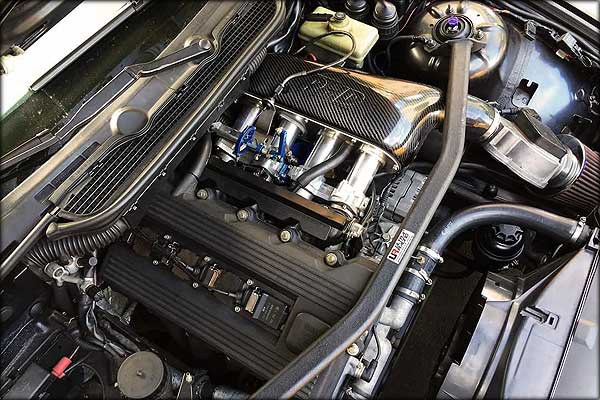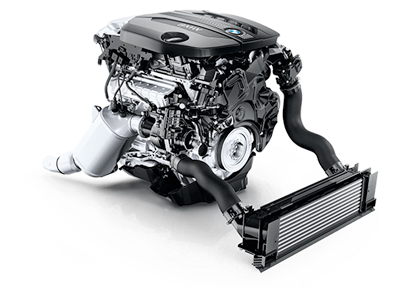Why the BMW Engine Is Taken Into Consideration Among the most effective in Luxury Automobiles
Why the BMW Engine Is Taken Into Consideration Among the most effective in Luxury Automobiles
Blog Article
Checking Out the Advancement of Burning Engines in Modern Transportation Systems
As we browse the landscape of contemporary transportation, the evolution of combustion engines stands as a testimony to human resourcefulness and engineering expertise. The interplay of history, innovation, and environmental worries in forming the trajectory of combustion engines produces a narrative that is both engaging and informative.
Very Early Beginnings of Combustion Engines
Exactly how did the concept of burning engines first emerge in the early stages of transportation development? When the concepts of interior combustion were first checked out, the roots of burning engines can be mapped back to the 17th century. In 1673, Christian Huygens conceptualized a basic internal combustion engine that used gunpowder to generate power. Nevertheless, it wasn't up until the late 19th century that useful applications of combustion engines in transportation began to emerge.
The innovation moment came with the creation of the very first effective gasoline-powered engine by Karl Benz in 1885 - bmw engine. This engine paved the way for the development of the modern-day vehicle, reinventing transportation systems worldwide. Subsequent innovations by Nikolaus Otto and Gottlieb Daimler better fine-tuned burning engine innovation, bring about the mass production of cars and the fast expansion of the transportation industry
These very early combustion engines were defined by their simpleness and efficiency, laying the foundation for the facility and effective engines made use of in modern-day transportation systems. The advancement of burning engines has contributed in forming the method we take a trip and transport items, noting a significant milestone in the background of transportation growth.
Change to Internal Burning Technology
The shift to inner combustion modern technology noted a crucial change in the development of transport systems. This shift began in the late 19th century, with creators like Nikolaus Otto and Gottlieb Daimler establishing the first successful internal combustion engines. These engines reinvented transportation by using a much more effective and effective choice to steam engines and electric motors.
Among the essential benefits of interior burning engines was their capacity to be reduced to match vehicles, causing the growth of bikes and automobiles. This change from bulky, fixed engines to small, mobile ones paved the way for the contemporary transport systems we see today.
The transition to interior combustion modern technology also spurred innovations in fuel technology, causing the development of fuel and diesel as primary fuel sources for automobiles. This shift not only made transport extra accessible to the masses but likewise laid the structure for the oil and gas market to become integral to international economic situations.
Influence of Combustion Engines on Transportation
The adoption of combustion engines in transport systems militarized an extensive shift in the efficiency and rate of worldwide movement. Burning engines revolutionized transportation by offering a functional and reliable source of power for various automobiles, including autos, ships, trucks, and aircrafts. This advancement considerably boosted the ability for individuals and goods to conform cross countries in shorter time structures, causing enhanced connection between regions and countries.
Additionally, the extensive use of burning engines has actually had a hop over to these guys substantial influence on economic growth. The capacity to deliver products successfully has actually stimulated trade and commerce, allowing services to expand their markets and reach consumers worldwide. This has actually assisted in economic development and globalization, as items can now be moved quicker and in larger quantities than ever.
Nevertheless, the ecological effect of combustion engines can not be overlooked. The burning of fossil fuels has resulted in air contamination and greenhouse gas discharges, adding to environment change and positioning health and wellness dangers to populaces. bmw engine. Therefore, there is a growing focus on establishing different propulsion innovations to mitigate these unfavorable results and produce a more sustainable future for transportation
Advancements in Burning Engine Design
Various improvements in burning engine style have thrust the development of transport systems over the years. One notable technology is the advancement of turbocharged engines, which use exhaust gases to drive a generator that presses inbound air, permitting more fuel to be scorched, causing raised power output without a substantial rise in engine dimension. Furthermore, direct shot technology has actually improved gas effectiveness and efficiency by exactly managing the quantity and timing of fuel injected right into the combustion chamber. Variable valve timing systems have also reinvented engine design by maximizing air flow at different engine rates, improving both power and effectiveness. One more considerable advancement is the assimilation of lightweight products such as carbon fiber and light weight aluminum alloys, lowering general engine weight and enhancing automobile gas economic climate. Additionally, improvements in computer-aided style have actually allowed designers to enhance engine performance and effectiveness through simulations prior to physical models are built, conserving time and resources in the advancement process. These advancements collectively add to the constant improvement of burning engines in modern transportation systems.
Future Patterns in Burning Engine Growth
With innovation improvements driving constant development, the future of combustion engine development is positioned to revolutionize transportation systems globally. One of the vital trends in burning engine growth is the press in the direction of better efficiency and lowered emissions. Manufacturers are spending greatly in research and advancement to improve engine performance while satisfying rigid environmental policies. This consists of the combination of innovative gas shot systems, improved turbocharging methods, and making use of lightweight materials to enhance fuel usage and decrease carbon discharges.
An additional prominent trend is the adoption of crossbreed modern go to my blog technologies in burning engines. Crossbreed engines combine traditional combustion technology with electrical power, providing boosted gas effectiveness and reduced discharges. As the automotive industry shifts towards electrification, crossbreed burning engines are viewed as a transitional option that bridges the gap in between traditional lorries and totally electric ones.
Furthermore, the assimilation of clever innovations, such as expert system and data analytics, is expected to play a significant duty in the future of burning engine growth. These innovations can optimize engine efficiency in real-time, leading to more efficient burning procedures and boosted overall automobile performance. Accepting these future patterns will not only drive technology in burning engine development you could look here yet likewise add to a more sustainable and ecologically pleasant transportation community.

Conclusion
Finally, the advancement of combustion engines in modern transportation systems has actually been noted by substantial developments in modern technology and layout. From the very early beginnings of combustion engines to the transition to inner combustion innovation, these engines have actually had an extensive effect on transport. Technologies in combustion engine style continue to drive progress in this area, with future fads focusing on additional enhancing effectiveness and lowering discharges. The future of combustion engines in transportation looks appealing as research and development efforts proceed to press limits.
The origins of burning engines can be mapped back to the 17th century when the principles of interior combustion were first discovered. These engines reinvented transportation by supplying a more efficient and powerful option to vapor engines and electrical motors.

Report this page